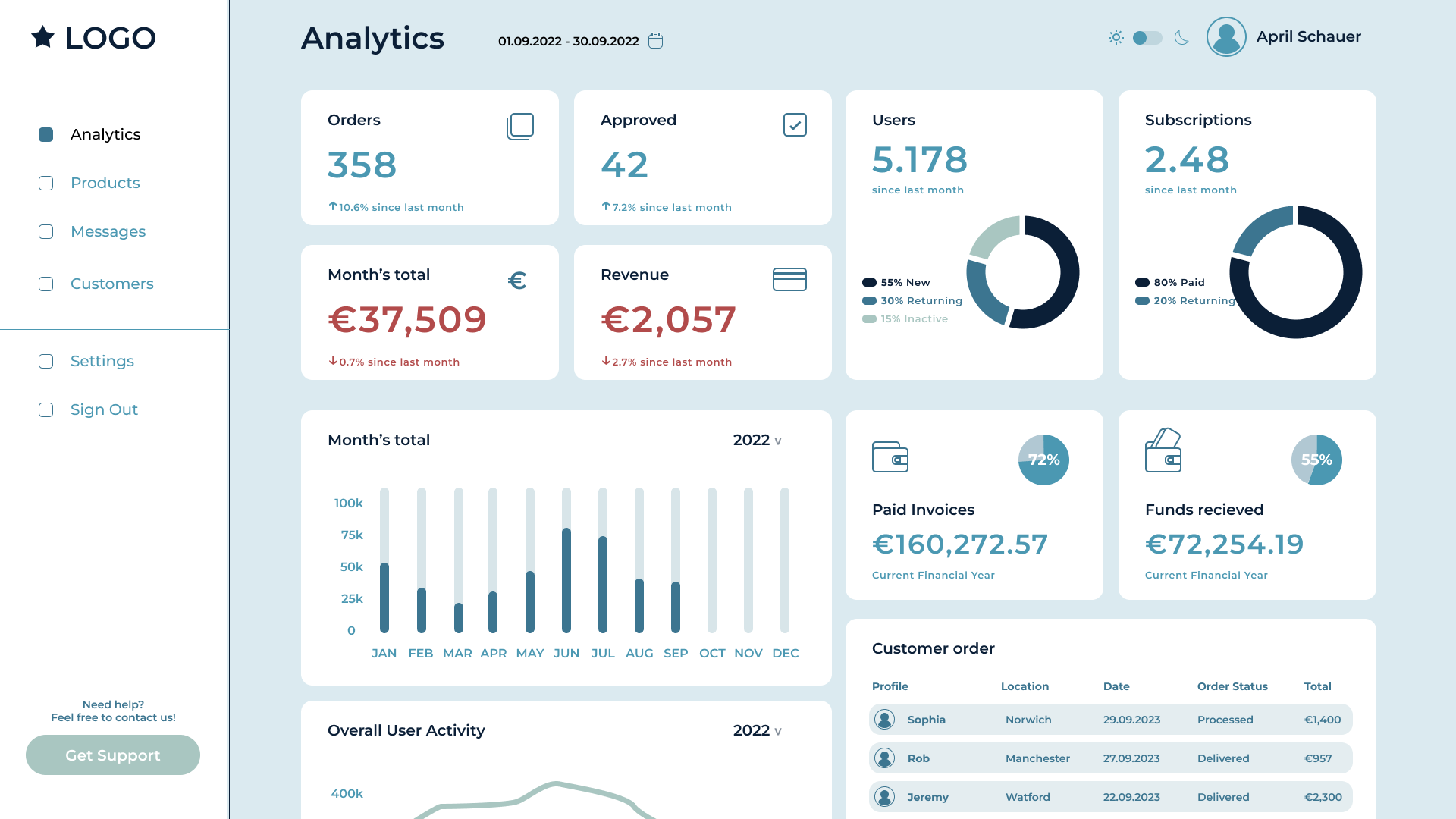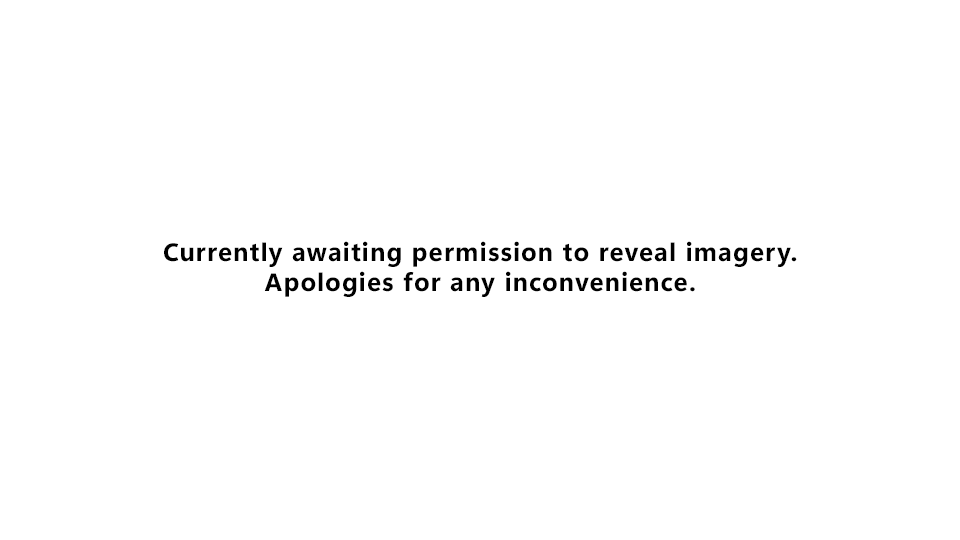Digital Transformation Design
Digital transformation design is at the heart of modern business innovation, blending cutting-edge technology with human-centered design to redefine how organizations operate and deliver value. It involves a strategic approach to redesigning business processes, customer experiences, and organizational culture, ensuring that companies remain agile and competitive in an ever-evolving digital landscape. By focusing on user experience, data integration, and scalable digital solutions, digital transformation design helps organizations unlock new growth opportunities, improve efficiency, and build stronger customer relationships in a rapidly changing worl
UX wireframe case studies
The following few examples have been chosen from my portfolio to demonstrate my ability to handle complex user flows, ensure usability, and showcase versatility across different types of applications.
Enterprise Dashboard / Analytics Tool
An intuitive and user-friendly dashboard that displays large amounts of data (e.g., business KPIs, financials, or operational metrics).
Brief requirements:
- Clear, logical layout for complex data sets.
- Use of filters, search functions, and real-time data updates.
- Role-based access control (show different user flows for admins vs. regular users).
Mobile Booking App
UX Flow
A wireframe for a mobile booking app, dealing with high-security environments while maintaining a smooth UX.
Brief requirements:
- Secure setup flow.
- Transaction history with sorting/filtering options.
- Smooth navigation for tasks like fund transfers, bill payments, and mobile deposits.
Healthcare Appointment Management System
Wireframes for a healthcare management system (e.g., booking appointments, telehealth, patient portals).
Brief requirements:
- Easy scheduling and rescheduling of appointments.
- Integration of patient records and prescriptions.
- Notifications for upcoming appointments or test results.
Example of Stakeholder Management Experience:
In my previous role as a Principle UI Artist at Seedify, I worked closely with both internal and external stakeholders on a large-scale redesign of a client-facing web portal. The key stakeholders included senior management, the IT department, external clients, and third-party vendors. Each group had unique expectations and objectives for the project.
Initial Engagement
At the start, I organized a series of workshops to understand each stakeholder’s priorities, pain points, and vision for the redesigned portal. This helped establish a clear scope of work, identify potential challenges early on, and ensure that all voices were heard.
Managing Expectations:
Throughout the project, I maintained regular communication with stakeholders through weekly status meetings, reports, and demonstrations. For example, senior management was primarily concerned with timelines and costs, while the IT department needed to ensure the portal’s technical feasibility. I tailored my communication to address the specific concerns of each group, balancing transparency with the need to manage expectations realistically.
Conflict Resolution and Decision-Making:
Midway through the project, there was a conflict between the design team and IT regarding a feature that affected both the user experience and the system architecture. I facilitated a meeting between the two teams, where we discussed the trade-offs and proposed a compromise that met user needs while maintaining system stability. By keeping the focus on the overall business objectives, I was able to align both teams toward a common goal.
Delivering Results:
In the end, the project was delivered on time and within budget, with high client satisfaction. Post-launch surveys indicated a 30% improvement in user experience, and I received positive feedback from senior management for effectively balancing the needs of different stakeholders and keeping the project on track.”
Examples of Complex Project Experiences:
In my career, it has been my pleasure to be involved in tasks that have required multiple stakeholders, advanced technology, tight deadlines, and cross-functional collaboration:
Digital Transformation for a Large Enterprise
In one project, I led the migration of a legacy ERP system to a cloud-based solution for a Fortune 500 company. The project involved coordinating multiple departments, managing third-party vendors, and ensuring compliance with both security and regulatory standards. We faced several challenges, including managing legacy data, minimizing downtime during the transition, and training staff on the new system. However, by maintaining clear communication channels and using an Agile methodology, we delivered the project on time and with a 20% reduction in operational costs.
Mobile Application Development for a Global Audience
I worked on a brief to develop a pitch for a mobile banking app for a large international financial institution, supporting multiple currencies and languages. The project required collaboration with both internal teams and external consultants to address local regulatory requirements, integrate third-party payment systems, and ensure the highest level of security.
Multi-Platform Game Development:
I led a multi-disciplinary team in the development of a cross-platform game that was deployed across PC and console. Managing this project required careful attention to performance optimization, as well as tailoring the UI/UX for each platform. By maintaining clear timelines and using continuous integration/continuous deployment (CI/CD) pipelines, we were able to meet all deadlines and reduce QA testing time by 25%.
Further questions
Which process do I follow?
The process I follow largely depends on the complexity of the project and the team dynamics. However, my overall approach is rooted in Agile methodology. I start by gathering and defining the project requirements alongside key stakeholders to ensure clear understanding and alignment. This is followed by breaking down the project into manageable tasks, creating user stories, and planning sprints. During the execution phase, I continuously collaborate with cross-functional teams, such as developers and UX designers, to ensure tasks are on track and aligned with the project vision.
Throughout, I maintain flexibility, using iterative feedback loops to adjust based on testing and user input. Post-launch, I review the project in retrospectives to highlight successes and identify areas for improvement.
How do I deal with challenges?
When faced with challenges, my first step is to analyze the problem by breaking it down into smaller, manageable parts. I always prioritize communication—keeping stakeholders and team members informed is crucial to align efforts in overcoming obstacles. Once I’ve identified the root cause, I brainstorm solutions and involve key players to weigh in on the options.
I also believe in being proactive rather than reactive. Challenges often come from unforeseen factors, but maintaining flexibility in planning and regular check-ins allows me to mitigate risks before they become significant issues. In more critical situations, I remain calm and solution-focused, always seeking to resolve the problem efficiently without compromising quality.
Have I dealt with complex projects?
Yes, I’ve dealt with several complex projects throughout my career. One example was a cross-platform UI/UX overhaul I led for a global gaming platform. The project involved multiple stakeholders, including developers, designers, and marketing teams, as well as ensuring compliance with international accessibility standards.
The challenge was not just delivering a user-friendly experience, but doing so under strict time constraints while ensuring seamless functionality across mobile, web, and console interfaces. I tackled this by dividing the project into sprints, holding regular alignment meetings to gather feedback, and prioritizing iterative testing and user feedback. Despite the scale of the project and the number of moving parts, we delivered a high-quality product on time and significantly improved user engagement metrics post-launch.




